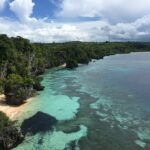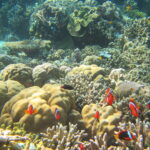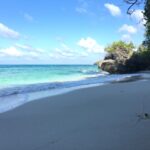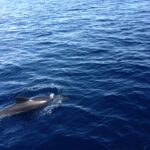Location
Wakatobi District, Southeast Sulawesi Province
Area:
13,900 square kilometres
Date declared as an AHP:
2017
Unique Flora: 11 species of sea grass, 32 species of true mangroves, and 8 species of mangrove associates
Unique Fauna: 396 species of hard corals (Scleractinia hermatypic), 10 species of non-Scleractinia ahermatypic, 590 fish species, 647 Serranidae species, 29 Napoleon Wrasse species, 11 species of cetaceans, Hawksbill turtle, green turtle, 85 species of birds
Habitat Types: The park has marine ecosystems (mangrove, seagrass and coral reefs)
Wakatobi National Park is gaining worldwide attention for its magnificent underwater life and superb beaches. Scuba diving, snorkeling, and simply enjoying the beach are among the most popular activities in the park. There are diving facilities for all skill levels, and adventure diving and night diving are also available. Visitors can take a tour to go island hopping to more of the islands of Wakatobi or go dolphin watching.
Different sites on Wakatobi National Park have the potential for educational, research, and recreational activities. Each area showcases natural, cultural, and historical features of the park.
Sub-district Wangi-Wangi and South Wangi Wangi
- Liya Fort Palace
- Tindoi Fort
- Togo Melongo Fort
- Mandati Tonga Fort
- Watu Lulu
- Tailaro Tooge
- Watu Ndengu-ndengu
- Saru-Sarua
- Oguu Lonto Naa Akano
- Wanggae Lolo
- Bhatu Bhaana Kawa
- Oa Wolio
- Pakani’a
- Padha Togo Molengo
District Kaledupa and South Kaledupa
- Kamali Traditional House in Palea
- Imam Fada Grave
- Tobelo Fort
- Kamali Fort
- La Manungkira Fort
- Palea Kampong (traditional village)
- La Donda Fort
- La Bohasi Fort
- Tapa’a Fort
- Bente Mosque
- Tua Ollo Fort
- Horuo Fort
- Laulua Kampong (traditional village)
- Olo (Lawa Lau Lua) Fort
District Tomia and East Tomia
- Patua Fort
- Suo-Suo Fort
- Rambi Randa Fort
District Binongko and Togo Binongko
- Wali Fort
- Koncu Kapala
- Palahidu Fort
- Oihu Fort
- Blacksmith Artisans
- Kau Rangka
- Wa Ode Goa ancient grave
- Baluara Fort





